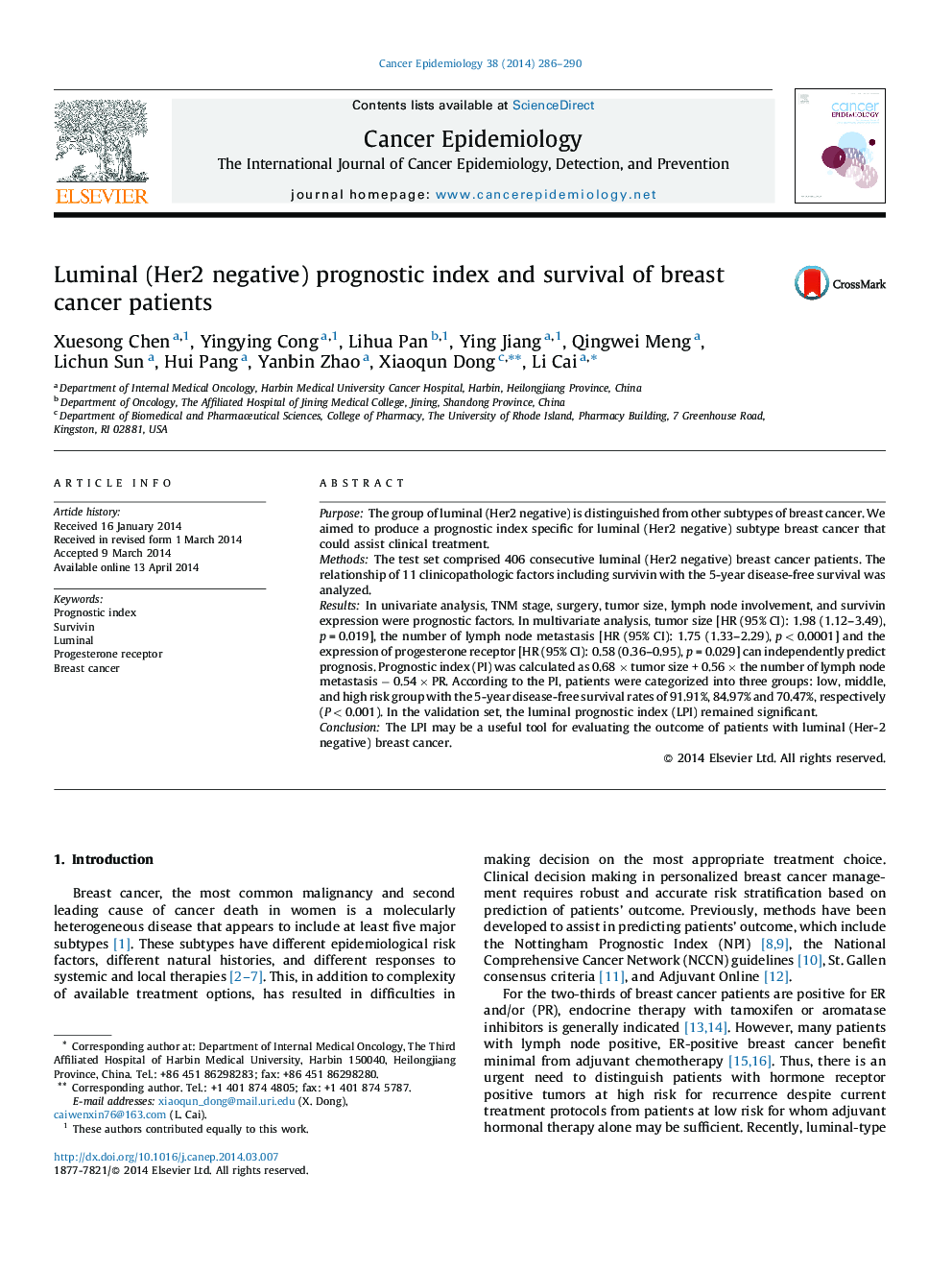| Article ID | Journal | Published Year | Pages | File Type |
|---|---|---|---|---|
| 2108989 | Cancer Epidemiology | 2014 | 5 Pages |
PurposeThe group of luminal (Her2 negative) is distinguished from other subtypes of breast cancer. We aimed to produce a prognostic index specific for luminal (Her2 negative) subtype breast cancer that could assist clinical treatment.MethodsThe test set comprised 406 consecutive luminal (Her2 negative) breast cancer patients. The relationship of 11 clinicopathologic factors including survivin with the 5-year disease-free survival was analyzed.ResultsIn univariate analysis, TNM stage, surgery, tumor size, lymph node involvement, and survivin expression were prognostic factors. In multivariate analysis, tumor size [HR (95% CI): 1.98 (1.12–3.49), p = 0.019], the number of lymph node metastasis [HR (95% CI): 1.75 (1.33–2.29), p < 0.0001] and the expression of progesterone receptor [HR (95% CI): 0.58 (0.36–0.95), p = 0.029] can independently predict prognosis. Prognostic index (PI) was calculated as 0.68 × tumor size + 0.56 × the number of lymph node metastasis − 0.54 × PR. According to the PI, patients were categorized into three groups: low, middle, and high risk group with the 5-year disease-free survival rates of 91.91%, 84.97% and 70.47%, respectively (P < 0.001). In the validation set, the luminal prognostic index (LPI) remained significant.ConclusionThe LPI may be a useful tool for evaluating the outcome of patients with luminal (Her-2 negative) breast cancer.
